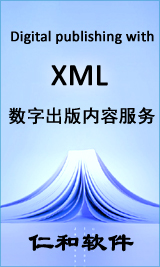ZHANG Kun
,
TANG Di
,
WU Hui-bin
钢铁研究学报(英文版)
The alloy was reheated to 580 ℃ for tempering at rates of 2, 5, 10, 20, and 40 ℃/s, respectively, after quenching. The amount, distribution, and stability of reversed austenite were investigated by X-ray diffraction (XRD) and electron back scatter diffraction (EBSD). The microstructure and cryogenic impact energy were studied by scanning electron microscope (SEM), transmission electron microscope (TEM) and Charpy V-notch (CVN) tests. The results showed that when the sample was heated at 10 ℃/s, the volume fraction of reversed austenite exhibited maximum of 8%; the reversed austenite was uniform along all kinds of boundaries; the reversed austenite contained higher concentration of carbon which enabled it to be more stable. The cryogenic toughness of the alloy was greatly improved when heated at 10 ℃/s, as the fracture surface observation showed that it mainly fractured in ductile rupture mode, which was consistent with the results of cryogenic impact energy.
关键词:
9Ni steel
,
heating rate
,
reversed austenite
,
cryogenic toughness
ZHAO Xiqing
,
PAN Tao
,
WANG Qingfeng
,
SU Hang
,
YANG Caifu
,
YANG Qingxiang
钢铁研究学报(英文版)
Mechanical properties of quenching, intercritical quenching and tempering (QLT) treated steel containing Ni of 9% were evaluated from specimens subject to various tempering temperatures. The detailed microstructures of steel containing Ni of 9% at different tempering temperatures were observed by optical microscope (OM) and transmission electron microscope (TEM). The volume fraction of austenite was estimated by XRD. The results show that high strength and cryogenic toughness of steel containing Ni of 9% are obtained when the tempering temperature are between 540 and 580 ℃. The microstructure keeps the dual phase lamellar structure after the intercritical quenching and there is cementite created in the Nirich constituents when tempering temperature is 540 ℃. When tempering temperatures are between 560 and 580 ℃, the reversed austenites (γ′) grow up and the dual phase lamellar structure is not clear. The γ′ becomes instable at 600 ℃. When tempered at temperature ranging from 500 to 520 ℃, the increase of dislocation density in the lamellar matrix makes both tensile strength and yield strength decrease. When tempered at 540 ℃ and higher temperature, the yield strength decreases continuously because the C and alloying elements in the matrix are absorbed by the cementite and the γ′, so the yield ratio is decreased by the γ′. There are two toughness mechanisms at different tempering temperatures. One is that the precipitation of cementite absorbs the carbon in the steel which plays a major role in improving cryogenic toughness at lower temperature. Another is that the γ′ and the purified matrix become major role at higher tempering temperature. When the tempering temperature is 600 ℃, the stability of γ′ is decreased quickly, even the transformation takes place at room temperature, which results in a sharp decrease of CharpyV impact energy at 77 K. The tempering temperature range is enlarged by the special distribution of cementite and the lamellar structure.
关键词:
steel containing Ni of 9%
,
tempering temperature
,
cementite
,
reversed austenite
,
cryogenic toughness






